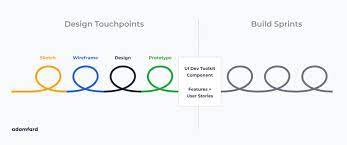The Agile Design Process combines the principles of design thinking and agile product management. It enables teams to explore and test new ideas while adapting to changing user needs.
Agile breaks projects into smaller iterations that are delivered to users. This allows teams to adapt to changes and quickly respond to feedback.
1. Requirements Analysis
Requirements analysis is one of the most important steps in the Agile Design Process. This is because it ensures that a project meets customer requirements and that the software delivers value for the users.
During the requirements analysis stage, a team of developers, business analysts, and UX designers should gather requirements from all relevant stakeholders in the organization. This includes people from the product development department, IT departments, third party vendors, and any other group that may have a role in developing the end-product.
Once all of the business requirements are collected, it is time to start ideating solutions to them. This involves identifying alternatives to meet the needs of the customers and developing a prototype model of what the end-product might look like.
2. Design Thinking
Design thinking is a process for finding opportunities and solutions that are relevant to your users. It also helps to solve complex problems in an uncertain world.
In the Agile Design Process, design thinking is a crucial step that should be implemented throughout the entire project. It can help to reduce errors in the development process and deliver more quality software.
The process begins with empathizing, defining, ideating and prototyping. It also includes user research, observing and immersing yourself in the users’ perspective.
3. Visualization
Visualization can be a key tool in the Agile Design Process. It helps teams to communicate with one another and create products that meet the needs of their end users.
This can also help them to avoid wasting time and effort by focusing on the end goal instead of minor changes that don’t add value. It also allows team members to test ideas early on and improve them as they go along.
Visualization can be done in several ways, such as graphs, charts, maps, and treemaps. Ultimately, the visualization needs to be readable and recognizable, as well as provide some information about the data that it represents.
4. Iteration
Iteration is an essential part of the Agile Design Process. This is because it allows designers to develop products quickly and effectively.
It also enables them to collect user feedback from real people. This ensures that the product meets users’ needs.
The team can then use this feedback to improve the design and functionality.
This is called continuous iteration.
The iterative nature of the Agile Design Process allows teams to change their design direction based on feedback from users. It also helps to keep the team focused and energized during development.
5. Implementation
Agile is a management process that helps teams become more flexible, responsive, and adaptable to change. It also allows them to improve the product and solve important problems with each iteration.
The Agile Design Process is an excellent way for designers to deliver products faster, more efficiently, and with greater user satisfaction. It also involves involving clients and stakeholders throughout the entire process.
In agile, teams are comfortable with uncertainty as they work in short iterations. They make rational decisions that eliminate minor errors and help them keep track of the progress of the project.

